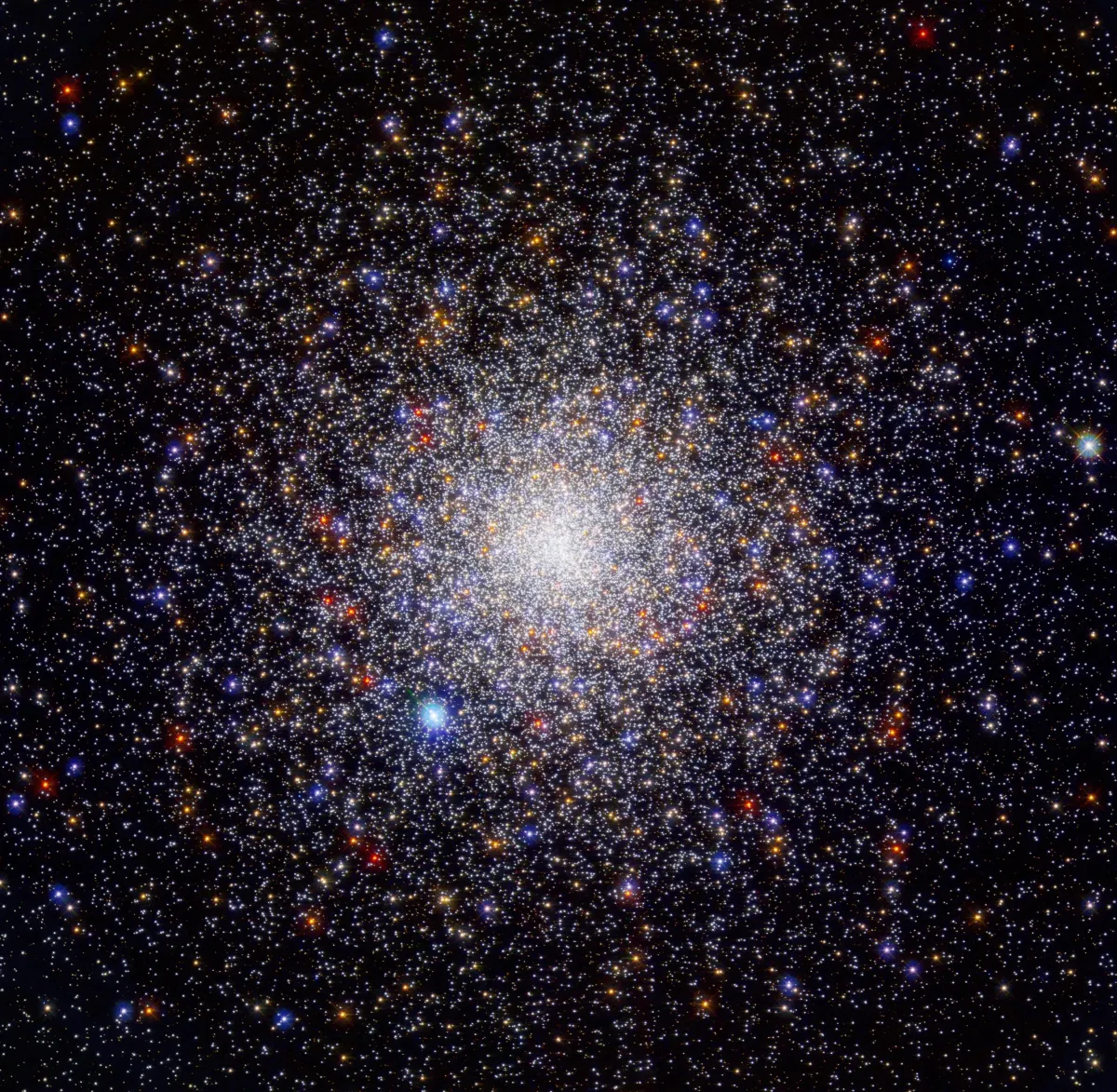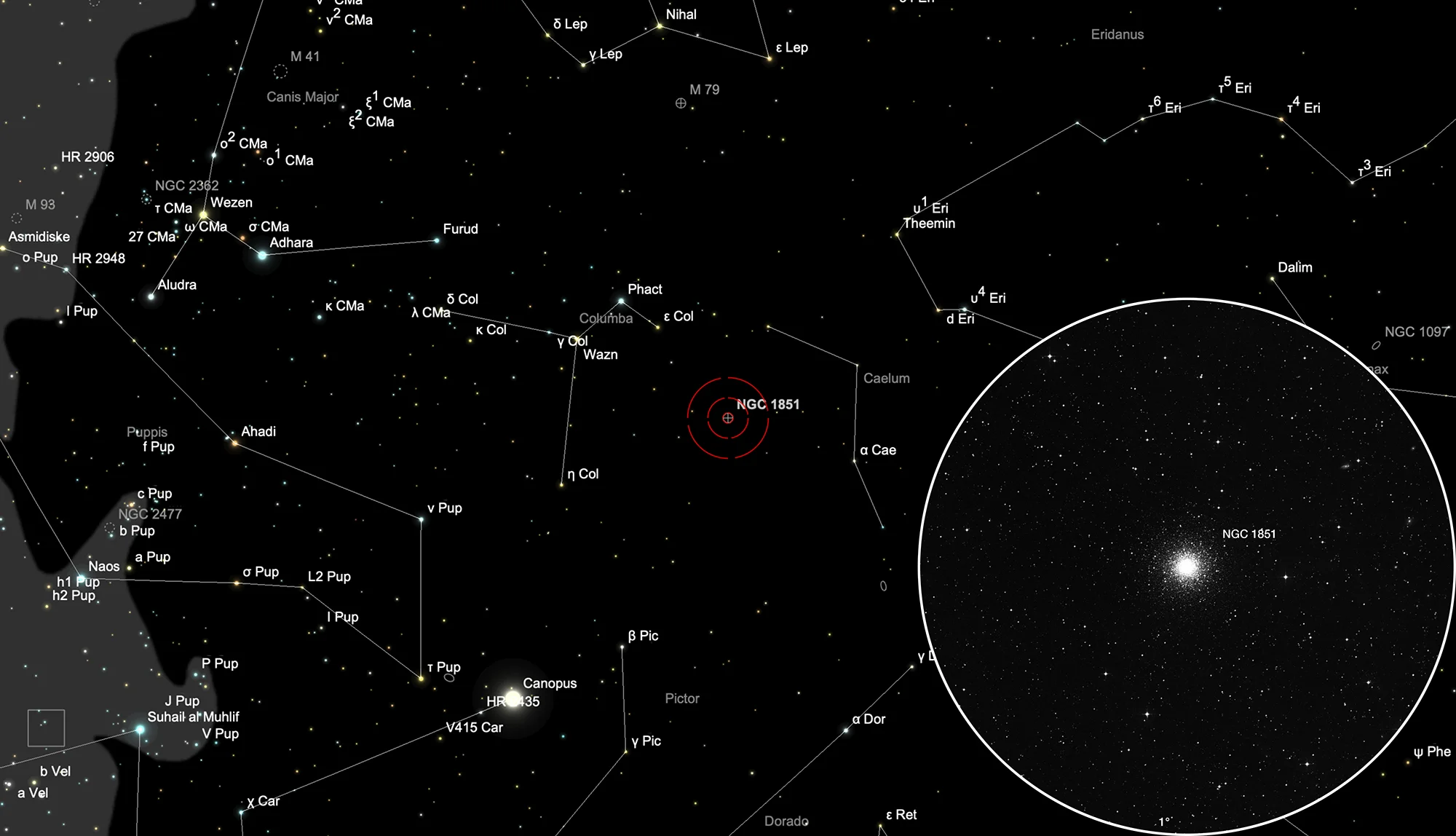Globular Cluster NGC 1851

History
The globular cluster NGC 1851 was discovered by James Dunlop on 10 May 1826 with his 9-inch speculum reflector at Parramatta, New South Wales in Australia. He listed it as Δ 508. His description based on five observations: «An exceedingly bright, round, well-defined nebula, about 1.5' diameter, exceedingly condensed, almost to the very margin. This is the brightest small nebula that I have seen. I tried several magnifying powers on this beautiful globe; a considerable portion round the margin is resolvable, but the compression to the centre is so great that I cannot reasonably expect to separate the stars. I compared this with the 68 Conn. des Tems, and this nebula greatly exceeds the 68 in condensation and brightness.» [50]
John Herschel recorded it as h 2777 and observed it three times from South Africa. Sweep 638 on 23 October 1835: «Superb globular cluster; all resolved into stars of 14th mag.; very suddenly much brighter in the middle to a blaze or nucleus of light; diam. in RA = 15 seconds of time. Difference of left and right eyes in resolving this cluster very remarkable. Returning from the left to the right eye, the object (in comparison) appears as if glazed over with a kind of dull film.» Sweep 754 on 5 December 1836: «Very bright; round; very suddenly very much brighter in the middle; 3'; all clearly resolved into stars from 14 to 16 mag except at the centre, where they are massed together into a blaze of light.» Sweep 772 on 7 Februar 1837: «Superb globular cluster, very bright; round; first very gradually then suddenly very much brighter in the middle; 4'; resolved, the stars barely visible in strong twilight.» [11]
Physical Properties
In many known globular clusters the stars are about the same age, indicating that the stars and cluster has formed at roughly the same time. Observations of NGC 1851 revealed that it hosts stellar populations with different ages. Surrounding the cluster is a faint halo of stars. While the origins of both the halo and the diverse star populations remain uncertain, one hypothesis proposes that NGC 1851 is the remnant of two globular clusters that merged within a now-disrupted dwarf galaxy. During the merger, gravitational interactions with larger galaxies may have stripped away the outer regions of the host galaxy, leaving behind only its stellar core and surrounding halo. [261]
| Designation | NGC 1851 |
| Type | GCL (II) |
| Right Ascension (J2000.0) | 05h 14m 06.3s |
| Declination (J2000.0) | -40° 02' 48" |
| Diameter | 12 arcmin |
| Visual magnitude | 7.1 mag |
| Metric Distance | 12.100 kpc |
| Dreyer Description | globular! vB, vL, R, vsvvbM, rrr |
| Identification, Remarks | h 2777; GC 1061; GCL 9; ESO 305-SC16 |
Finder Chart
The globular cluster NGC 1851 is located in the constellation Columba and hence not visible from central Europe. On 12 December it in opposition with the Sun and is therefore highest in the sky at local midnight.
